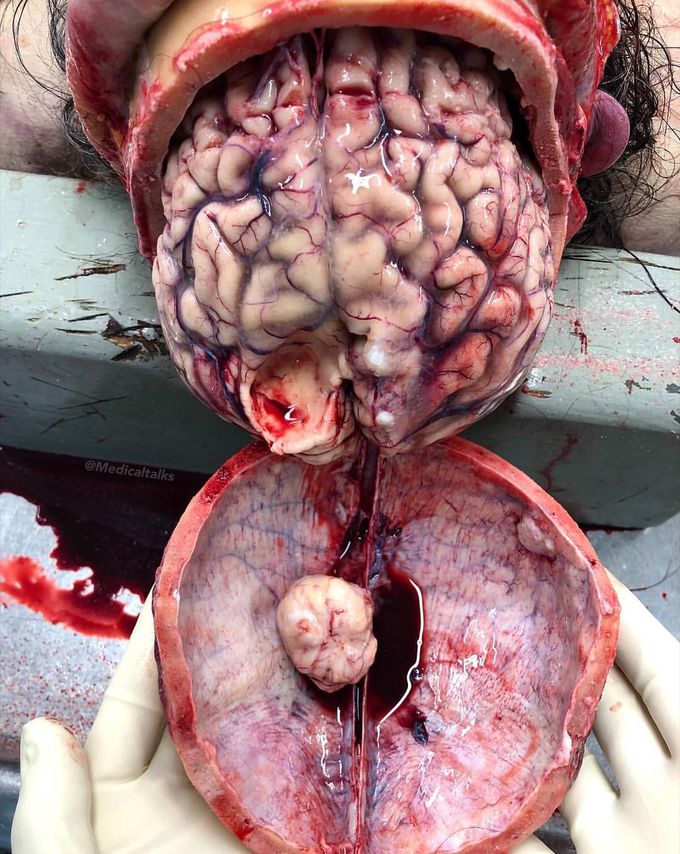


Post-Mortem examination revealing an egg sized meningioma attached to the brain! 🧠
Incidental meningiomas are not rare at autopsy and can be found in up to 2% of apparently healthy individuals. Meningiomas represent the most common benign tumors of the central nervous system, making up nearly 30% of all primary intracranial tumors. Meningiomas, as the name implies, are originated from the meninges, more specifically the meningothelial (arachnoidal) cells. They are benign, frequently with defined borders, attached to the inner surface of the dura mater, and often enabling complete surgical removal, which offers the best chance for a cure. Their clinical behavior can range from a silent incidentaloma to a lethal tumor. Many small meningiomas are found incidentally and are entirely asymptomatic. Often they cause concern as they are mistakenly deemed to be the cause of vague symptoms, most frequently headaches. Larger tumors or those with adjacent edema or abutting particularly sensitive structures can present with headache, paresis, and change in mental status. When operated, the neurosurgeon opens the skull through a craniotomy to enable full access to the meningioma. The goal of surgery is to remove the meningioma completely, including the fibers that attach it to the coverings of the brain and bone. Photo by @123anatomy_human321
I can’t imagine the pain that tumor would have caused

